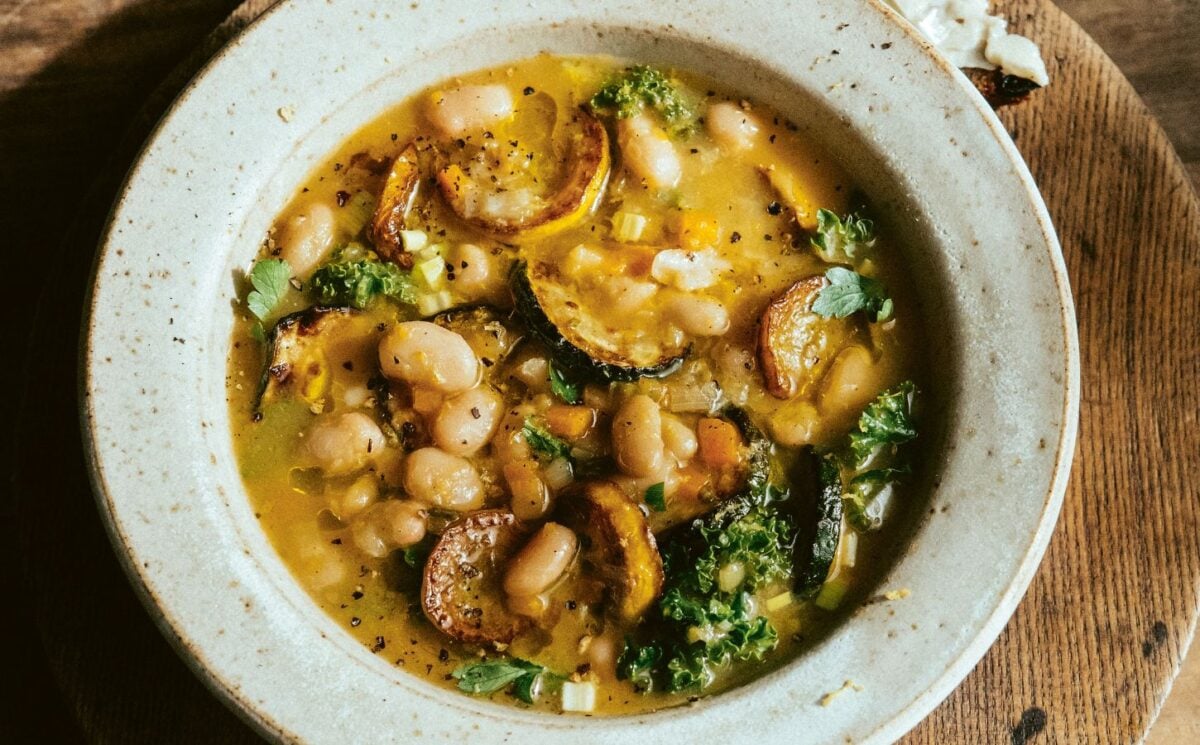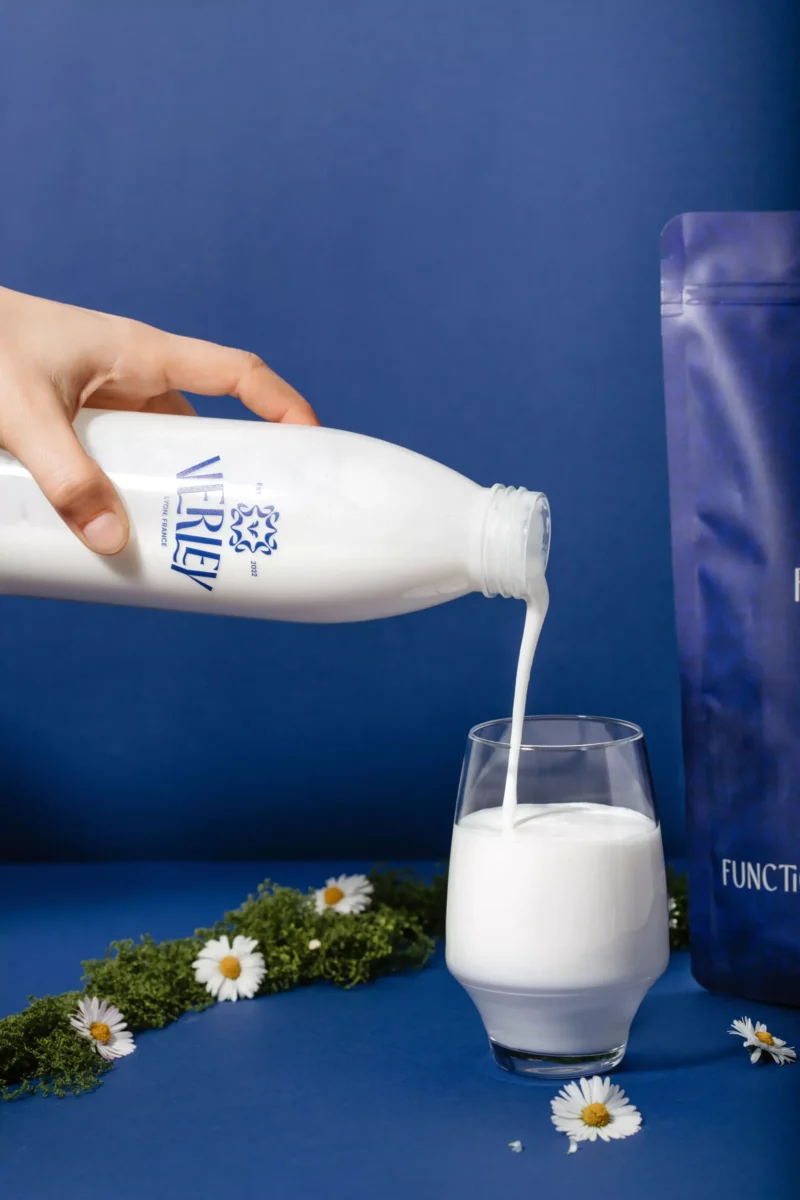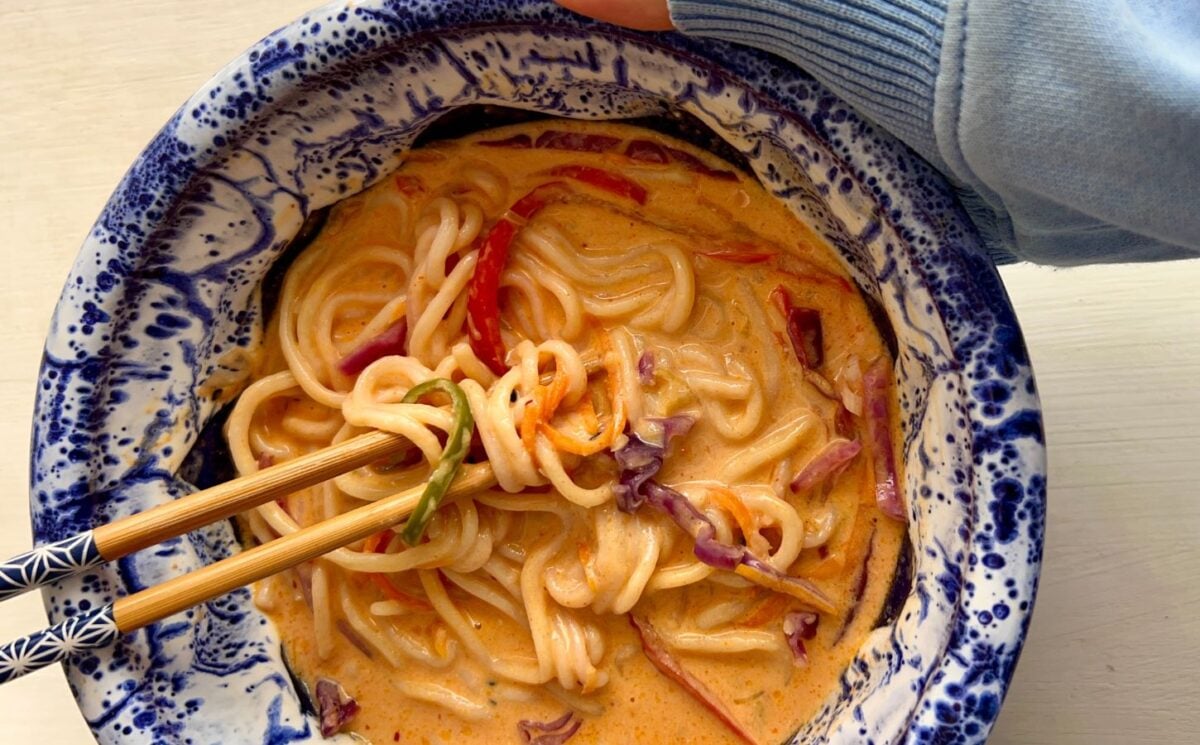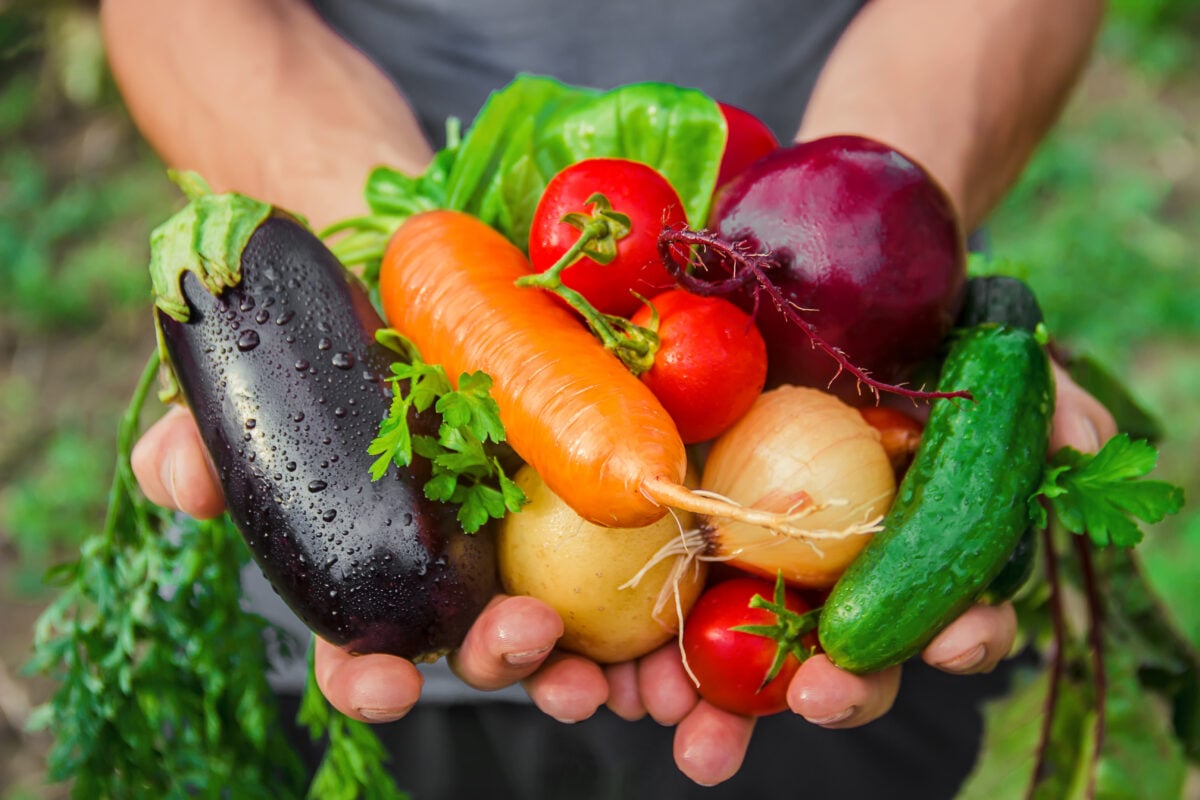グリコーゲンの枯渇 - 運動をしない方法
運動したり、食事制限をするとどうなるでしょうか? グリコーゲン枯渇とは何ですか?それを避けるべきですか? グリコーゲンを枯渇させると何かメリットがあるのでしょうか?
ミロス ポキミカ
によって書かれた: ミロス ポキミカ
医学的に検証した結果 Xiùying Wáng, M.D. 博士。
Updated 5月 29, 2023運動したり、食事制限をするとどうなるでしょうか? グリコーゲン枯渇とは何ですか?それを避けるべきですか? グリコーゲンを枯渇させると何かメリットがあるのでしょうか?
体に何が起こるかというと、(飢餓モードではなく)絶食モードに入るということです。飢餓とは全く異なる状態です。
最初の段階では、体は貯蔵された糖グリコーゲンの形ですぐに利用できるカロリーを燃焼します。脂肪と同じように、私たちの体にはすぐに使用できる糖分(グリコーゲン)が貯蔵されており、簡単に代謝されます。これは瞬時に利用できる素早いエネルギーであり、脂肪とは異なり代謝経路を必要としません。私たちの細胞はグリコーゲンを直接使用します。
糖の大部分は主に肝臓と筋肉の細胞に貯蔵され、水で水分を補給されます。血流で利用可能なエネルギーよりも多くのエネルギーを燃焼し始めると、血糖値が低下します。対策の第一段階では、私たちの体は簡単に入手できる貯蔵エネルギー源、つまり貯蔵されたグリコーゲンを利用します。糖水分子が燃焼するとき、グリコーゲンは細胞内の水で水和されるため、代謝の過剰または副産物です。そのため、最初の段階では水分の重量が若干減ります。
これを知らないと、ダイエット中に水分が失われ、喜んで、後で水分が戻ってきたときに驚くかもしれません。通常、最初の週の劇的な体重減少の原因は、グリコーゲンとナトリウムから放出される水分の損失です。
In the liver, glycogen reserves can build up to 5–6% of the organ’s flesh weight (100–120 grams in an adult). Muscles have a much lower concentration of glycogen, in the range of one to two percent of the total muscle mass.
トレーニングを受けていない人は、通常約 400 グラムのグリコーゲンを保持しており、筋肉と肝臓の両方の全身に蓄えられています。訓練されたプロのアスリートはその2倍の量を保持できます。この量のグリコーゲンは、補充なしで数時間の激しい運動を続けるのに十分です。
トレーニングすると体が適応し、状態が改善します。プロのアスリートも、筋内グリコーゲン貯蔵量を増やすことで体を強制的に適応させるために、運動後に炭水化物ローディングと呼ばれるものを行います。これに関してはいくつかの研究が行われています。カフェインを摂取したり、コーヒーを飲んだりすると、グリコーゲンの貯蔵量がより早く補充される傾向があります。
長距離アスリートはグリコーゲンの枯渇を経験することがよくあります。それを「壁にぶつかる」と言います。プロスポーツでは、糖分が枯渇すると疲労が続き、時には動くのが困難になる場合もあるため、影響が大きくなります。スポーツ選手が大騒ぎするのはこれが理由です。ボンキング(グリコーゲン枯渇)とは、ただ疲れているだけの状態ではありません。ボンキングとは、グリコーゲンの貯蔵量が非常に少なくなり、脳がエネルギーを使い果たし、体が停止することです。
初期段階と容易に利用可能なグリコーゲンの貯蔵量の代謝が完了すると、肝臓は脂肪とタンパク質を分解して直ちにエネルギーを形成し始めます。問題は、このプロセスには時間がかかり、糖新生が始まるまでアスリートは低血糖の症状を経験する可能性があることです。そうなれば、プロスポーツ選手が極度の疲労で倒れるケースも珍しくなくなるだろう。

低血糖はめまい、かすみ目、幻覚を伴います。このような状況下では意識喪失も発生する可能性があります。複数の異なるエネルギー源を組み合わせて使用することで、高い筋力出力を長期間維持できるようにすることは、プロスポーツや研究において重要なことです。また、マラソン前に糖新生を利用するためにダイエットをしてから走ることはできません。脂肪だけを燃料源としてマラソンを走ることは現実的ではありません。脂肪をより高い速度で代謝できれば、決して疲れることはなく、無限に走り続けることができます。残念ながら、脂肪代謝のエネルギー効率はそのレベルではありません。
Moreover, our body can only process a limited amount of carbohydrates per hour also, around 30-60 grams depending on individual efficiency. You probably won’t race a marathon, but it is essential to understand how the body works if you want to exercise, you can potentially do yourself damage, or don’t get the desired results.
ボディビルディングにおいては、筋肉量を異化してエネルギーにすることは望ましいことではないため、これは重要なことです。16 時間から 72 時間でグリコーゲンが枯渇すると、体はエネルギー生成のためにアミノ酸とタンパク質の異化に大きく依存します。運動の有無にかかわらず断食を行うとアミノ酸が使用され、筋肉量の一部が失われます。それを最小限に抑えるように努めることはできますが、一部のアミノ酸はエネルギーとして使用されてしまいます。
組織の一部が失われることは、思っているほど深刻ではありません。進化の目的があり、適度に行えば健康上の利点もあります。人間を含むすべての動物が定期的に絶食モードに入るのは正常です。私たちの体は、身体活動に適応してきたのと同じように、進化の過程で断食にも適応してきました。適度な定期的な絶食は、オートファジー (自己食べる) として知られるプロセスで、突然変異して損傷した前がん細胞を浄化するのに役立ちます。細胞が 2 つあり、1 つが損傷し、エネルギーを得るために 1 つを破壊する必要がある場合、体は損傷した細胞を最初に異化して、ある意味自分自身を浄化します。運動や断食を普段の生活に取り入れないと、健康に悪影響を及ぼします。

この初期期間を過ぎると、私たちの代謝はケトーシスに移行し、エネルギーのほぼすべてが脂肪代謝によるケトン体から得られます。基礎代謝も下がり、つまりエネルギーの利用効率が良くなります。ダイエットしたいなら、これはあなたが望んでいる状態です。あなたが対処できる量の永久的なカロリー不足です。マラソンを走ったり、速い状態で激しい運動をしたりすることは、脳に食べ物がなくなり、エネルギーとして自分の筋肉組織を使わざるを得なくなるため、それほど有益ではないかもしれません。これは望ましい結果ではありません。

- Feeding – Insulin levels rise during meals. This allows glucose to be absorbed into tissues such as the muscle or brain and used directly for energy. Excess glucose is stored in the liver as glycogen.
- 吸収後段階は、絶食開始から 6 ~ 24 時間後に起こります。インスリンレベルが低下し始めます。グリコーゲンが分解されてエネルギーとなるブドウ糖が生成されます。グリコーゲンの貯蔵は約24時間持続します。
- Gluconeogenesis can take anywhere from 24 hours to 2 days. In a process known as “gluconeogenesis,” the liver creates new glucose from amino acids. This literally translates as “creating new glucose.” Glucose levels in non-diabetics fall but remain within the normal range.
- Ketosis – 2-3 days after fasting begins – The low insulin levels reached during fasting promote lipolysis or the breakdown of fat for energy. Triglycerides, the fat storage form, are composed of a glycerol backbone and three fatty acid chains. Glycerol is used in the process of gluconeogenesis. Many tissues in the body can use fatty acids directly for energy, but not the brain. Ketone bodies, which can cross the blood-brain barrier, are synthesized from fatty acids and used by the brain. Ketones provide approximately 75% of the energy used by the brain after four days of fasting. The two major types of ketones produced are beta-hydroxybutyrate and acetoacetate, both of which can increase by more than 70 percent during fasting.
- タンパク質保存フェーズ。高レベルの成長ホルモンは、筋肉量と無駄のない組織を維持するのに役立ちます。基礎代謝を維持するために必要なエネルギーは、ほぼすべて遊離脂肪酸とケトン体によって供給されます。ノルアドレナリン(アドレナリン)レベルの増加により、代謝率の低下が防止されます。
The human body has well-developed mechanisms for dealing with hunger. In essence, what we are describing here is the process of transitioning from burning glucose to burning fat. That is it. Fat is simply stored food energy in the body. When there is a scarcity of food, stored food is naturally released to fill the void. So, no, the body does not ‘burn muscle’ to feed itself until all fat stores are depleted. There will be some catabolism at acceptable levels if you don’t have diabetes. In situations where there is hypoglycemia for survival, our body will burn everything to preserve brain cells from dying. If you don’t have hypoglycemia then no the body will not burn muscle but fat.
元々の脂肪の量にもよりますが、水を飲むだけで 2.5 ~ 3 か月間生き続けることができます。脂肪が多量にあれば、私たちはずっと長く生きられますが、栄養欠乏が起こります。このため、低カロリーで栄養価が高く、全繊維が豊富な食品があらゆる食事のベースとなります。
この良い例は、アンガス・バルビエリという男性です。 医師の監督下で1年間水断食をした人 勉強 (スチュワートと 1973年に)。彼にはビタミンサプリメントのみが与えられました。カロリーもプロテインもなし。

参考文献:
- マレー、B.、ローゼンブルーム、C. (2018)。コーチとアスリートのためのグリコーゲン代謝の基礎。 栄養学のレビュー, 76(4)、243–259。 https://doi.org/10.1093/nutrit/nuy001
- SG のインピー、MA のハリス、KM のハモンド、JW のバートレット、J. ルイス、GL のクローズ、JP のモートン (2018)。必要な作業の燃料: 炭水化物のピリオダイゼーションとグリコーゲン閾値仮説の理論的枠組み。 スポーツ医学, 48(5)、1031–1048。 https://doi.org/10.1007/s40279-018-0867-7
- Stewart, W. K., & Fleming, L. W. (1973).382日間にわたる治療的断食の成功の特徴。 大学院医学雑誌, 49(569)、203–209。 https://doi.org/10.1136/pgmj.49.569.203
栄養と健康について何か質問はありますか?
ぜひご意見をいただき、次回の投稿でお答えしたいと思います。皆様のご意見とご意見に感謝しており、すぐにご連絡をお待ちしております。私もあなたを招待します フォローする Facebook、Instagram、Pinterestでダイエット、栄養、健康に関するコンテンツをご覧ください。そこにコメントを残して、他の健康愛好家とつながり、あなたのヒントや経験を共有し、私たちのチームやコミュニティからサポートや励ましを得ることができます。
この投稿があなたにとって有益で楽しいものであり、学んだ洞察を生かす準備ができていることを願っている。この投稿が役に立ったと思われた方は シェアする 友人や家族など、その恩恵にあずかれるかもしれない人たちと一緒に。誰が健康の旅にガイダンスやサポートを必要としているかわからないのですから。
– あなたはおそらくそれも好きでしょう –

栄養について学ぶ
ミロス・ポキミカは、自然医学の医師、臨床栄養士、医療健康と栄養のライター、栄養科学アドバイザーです。書籍シリーズの著者 ビーガンに行きますか?科学の復習また、自然健康サイト「GoVeganWay.com」を運営している。
医療上の免責事項
GoVeganWay.com では、最新の栄養と健康関連の研究のレビューをお届けします。提供される情報は著者の個人的な意見を表すものであり、専門的な医学的アドバイス、診断、または治療に代わることを意図または暗示するものではありません。提供される情報は情報提供のみを目的としており、資格のある医師または医療提供者の相談、診断、および/または治療に代わるものとして機能することを意図したものではありません。GoVeganWay.com で読んだことや GoVeganWay.com を通じてアクセスしたことを理由に、専門家の医学的アドバイスを無視したり、医療治療を受けるのを遅らせたりしないでください。
認可された医師に相談する前に、GoVeganWay.com で読んだ内容の結果としてライフスタイルの変更や変更を決して適用しないでください。
医療上の緊急事態が発生した場合は、直ちに医師または 911 に電話してください。GoVeganWay.com は、内部で言及されている特定のグループ、組織、検査、医師、製品、手順、意見、またはその他の情報を推奨または承認しません。
編集者のおすすめ –
ミロス・ポキミカは、自然医学の医師、臨床栄養士、医療健康と栄養のライター、栄養科学アドバイザーです。書籍シリーズの著者 ビーガンに行きますか?科学の復習また、自然健康サイト「GoVeganWay.com」を運営している。
最新記事 -
プラントベースのニュース
-
Some Dogs Can Sort Toys By Function, Says New Study On Canine ‘Label Extension’
on 11月 5, 2025
-
Courgette, Leek, White Bean And Kale Stew
on 11月 5, 2025
-
Precision Fermented Dairy Proteins Receive ‘No Questions’ Approval From FDA
on 11月 4, 2025
-
This One-Pan Ramen Is Ready In 30 Minutes
on 11月 4, 2025
-
How to Make Fresh Vanilla Hemp Milk at Home
on 11月 3, 2025
-
Animal Farming Is ‘World’s Biggest Cause Of Food Waste,’ Says Report
on 11月 3, 2025
-
Butter Bean And Sweet Papas Coconut Stew
on 11月 2, 2025
トップヘルスニュース — ScienceDaily
- Nanotech makes cancer drug 20,000x stronger, without side effectson 11月 6, 2025
A Northwestern team transformed a common chemotherapy drug into a powerful, targeted cancer therapy using spherical nucleic acids. The redesign dramatically boosted drug absorption and cancer-killing power while avoiding side effects. This innovation may usher in a new era of precision nanomedicine for cancer and beyond.
- Scientists may have found how to reverse memory loss in aging brainson 11月 6, 2025
Virginia Tech researchers have shown that memory loss in aging may be reversible. Using CRISPR tools, they corrected molecular disruptions in the hippocampus and amygdala, restoring memory in older rats. Another experiment revived a silenced memory gene, IGF2, through targeted DNA methylation editing. These findings highlight that aging brains can regain function through precise molecular intervention.
- Scientists uncover meditation’s hidden side effectson 11月 5, 2025
Meditation is widely praised for its mental health benefits, but new research shows that it can also produce unexpected side effects for some people—from anxiety and dissociation to functional impairment. Psychologist Nicholas Van Dam and his team found that nearly 60% of meditators experienced some kind of effect, and about a third found them distressing.
- Most Americans don’t know alcohol can cause canceron 11月 5, 2025
Most U.S. adults don’t realize alcohol raises cancer risk, and drinkers themselves are the least aware. Scientists say targeting these misbeliefs could significantly reduce alcohol-related cancer deaths.
- A breakthrough map reveals how the brain really workson 11月 5, 2025
Scientists have shown that brain connectivity patterns can predict mental functions across the entire brain. Each region has a unique “connectivity fingerprint” tied to its role in cognition, from language to memory. The strongest links were found in higher-level thinking skills that take years to develop. This work lays the groundwork for comparing healthy and disordered brains.
- A shapeshifting protein explains rabies’ deadly poweron 11月 5, 2025
Researchers discovered how rabies virus exerts massive control over host cells with very few genes. A key viral protein changes shape and binds RNA, allowing it to infiltrate different cellular systems. This adaptability could explain the power of other deadly viruses, including Nipah and Ebola. The breakthrough may lead to next-generation antivirals or vaccines.
- Cockroaches are secretly poisoning indoor airon 11月 5, 2025
Cockroach infestations don’t just bring creepy crawlers, they fill homes with allergens and bacterial toxins that can trigger asthma and allergies. NC State researchers found that larger infestations meant higher toxin levels, especially from female roaches. When extermination eliminated the pests, both allergens and endotoxins plummeted. The findings highlight how pest control is vital for cleaner, healthier air indoors.
パブメッド、 #ビーガンダイエット –
- Impact of in vitro digestion on the cytotoxicity and microbial viability of cholinesterase-inhibitor-rich vegan soups in human intestinal cell modelson 11月 1, 2025
Vegan lunch soups formulated with mushroom, asparagus, leek, and sea buckthorn were previously developed by our team to provide a consistent daily intake of dietary cholinesterase inhibitors. Considering the proposed continuous consumption of these functional soups, it is essential to examine any cytotoxic responses that may occur in the gastro-intestinal tract. This work starts this topic by investigating the effect of in vitro digested soups towards selected human intestinal cells and…
- A 6-Month, Prospective, Multi-arm Study for the Efficacy of Standardized Nutraceuticals to Improve Hair Fiber Thickness and Strengthon 10月 31, 2025
CONCLUSIONS: This study demonstrates that ingestion of these bio-specific HGNs are associated with significantly enhanced hair shaft diameter and decreased breakage, resulting in longer, stronger hair across their intended populations. These findings support the use of these HGNs for hair thinning, offering alternative options for various populations for improving hair growth and thickness.
- Consumer Acceptance of Sustainable Cat Diets: A Survey of 1380 Cat Guardianson 10月 29, 2025
There is increasing awareness about the adverse environmental and ‘food’ animal welfare impacts associated with the production of meat-based pet food. However, little is known about cat guardians’ acceptance of more sustainable food choices for the global population of approximately 476 million pet cats. By surveying 1380 cat guardians, this study explored feeding patterns used by guardians, determinants of their cat food choices, and their acceptance levels of more sustainable cat food…
- Consumer Acceptance of Sustainable Dog Diets: A Survey of 2639 Dog Guardianson 10月 29, 2025
Interest in more sustainable diets for the global population of 528 million companion dogs is steadily increasing, encompassing nutritionally sound cultivated meat, vegan, and microbial protein-based dog foods. Factors driving these alternative dog foods include lower impacts on the environment, fewer welfare problems related to intensively farmed animals and wild-caught fish, and potentially superior canine health outcomes, relative to conventional meat-based dog food. Through a […]
- Beliefs and behaviours associated with vegetarian, vegan, and gluten-free diets among Canadians capable of bearing childrenon 10月 29, 2025
There is increased interest in self-selected exclusionary diet patterns, specifically vegetarian, vegan, and gluten-free (GF) diets, but there is a lack of research exploring the beliefs and behaviours surrounding these diets in Canadians capable of bearing children (CCBC). The goal of this study was to explore the beliefs and behaviours of CCBC who follow vegetarian, vegan, and/or GF diets using mixed methods. A self-administered online Qualtrics™ survey containing 102 questions was […]
ランダムな投稿 –
おすすめの投稿 -

PubMed の最新情報、 #植物ベースの食事 –
- Diet quality scores and incidence of cardiovascular events: A 4-year prospective study of patients in cardiology secondary care (BALANCE Program Trial)by Aline Rosignoli da Conceição on 11月 5, 2025
As a modifiable determinant, dietary patterns are a crucial factor in the prevention of cardiovascular disease (CVD), as they account for more than half of all CVD-related deaths and disabilities. Thus, we aimed to assess whether changes in diet quality along with six a priori-defined diet scores were associated with the incidence of cardiovascular (CV) events during four years of follow-up of secondary care cardiology patients. We conducted a secondary prospective analysis of 1,704, 1,629 […]
- Dietary animal fat disrupts gut microbiota and aggravates Scl-cGVHD after allogeneic hematopoietic stem cell transferby Danielle D Millick on 11月 5, 2025
Allogeneic Hematopoietic Stem Cell Transplant (allo-HCT) is an effective treatment for high-risk or relapsed acute leukemia. However, the frequent occurrence of graft-versus-host disease (GVHD) poses significant complications. Modifiable factors such as the gut microbiome and dietary regimen have the potential to influence the frequency and severity of GVHD. Previous studies in mouse models have shown a direct link between obesity and increased severity of GVHD. Analysis of human data has not…
- Dose-response effects of a mixed condensed and hydrolyzable tannin extract on methane production and diet digestibility using the in vitro gas production techniqueby Jordan M Adams on 11月 5, 2025
Several studies have evaluated the impact of isolated condensed or hydrolyzable tannin extract (TE) supplementation for beef cattle on methane (CH4) mitigation and metabolic functions, but fewer have evaluated their combination. Our objective was to investigate changes in in vitro fermentation dynamics, CH4 production, neutral detergent fiber digestibility (ivNDFD), and ruminal volatile fatty acid (VFA) concentrations in response to the inclusion rate of a TE blend (Silvafeed ByPro; […]
- Molecular mechanism of tea polyphenols in alleviating tetrabromobisphenol A (TBBPA)-induced PANoptosis in carp (Cyprinus carpio) livers based on network toxicology and pharmacologyby Hongru Wang on 11月 5, 2025
Tetrabromobisphenol A (TBBPA), characterized by extensive industrial utilization and low biodegradability, exhibits significant bioaccumulation potential in aquatic ecosystems, thereby posing substantial toxicological risks to aquatic organisms. Tea polyphenols (TP) are plant extracts with anti-inflammatory and antioxidant therapeutic potential. In this study, network toxicology and pharmacology approaches were employed to investigate the hepatotoxic mechanism of TBBPA and the […]
- Discovery of urinary biomarkers of kiwifruit intake in a randomized intervention studyby Zilin Xiao on 11月 4, 2025
CONCLUSIONS: This study identified potential biomarkers of kiwifruit and developed a prediction model that may differentiate consumers. Further validation is necessary to confirm the reliability and generalizability of our findings.
- Nourishing the Skin: A Review of Diet’s Role in Hidradenitis Suppurativaby Jordan Beam on 11月 4, 2025
Hidradenitis suppurativa (HS) is a complex skin condition influenced by both genetic and environmental factors. Increasing evidence points to diet as a key contributor to disease severity through systemic inflammatory pathways. A review of recent literature was conducted to evaluate the relationship between dietary patterns and advancement of HS. Pro-inflammatory diets such as the Western diet, leucine-rich diets, and brewer’s yeast were associated with HS exacerbation through mTOR activation…




























